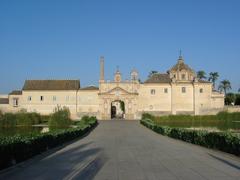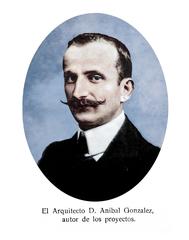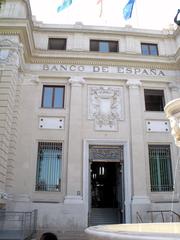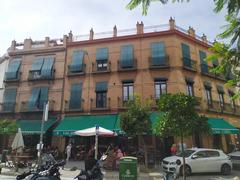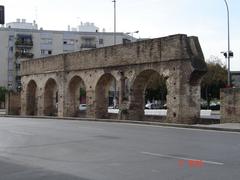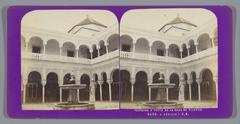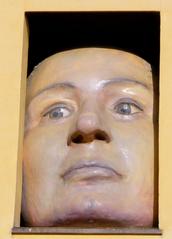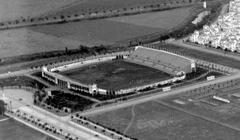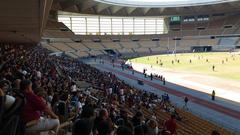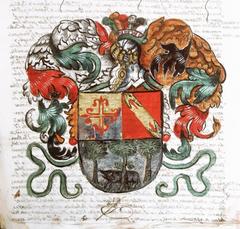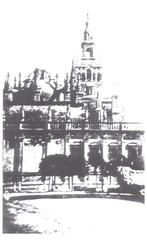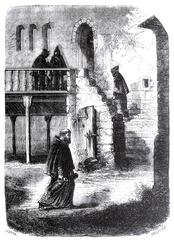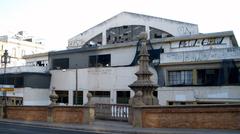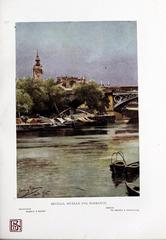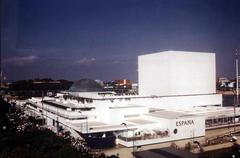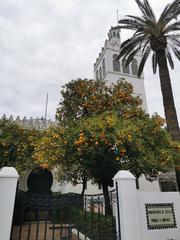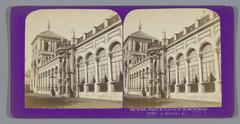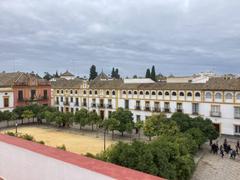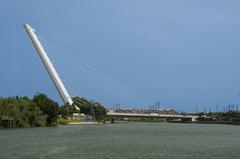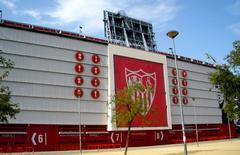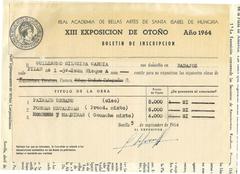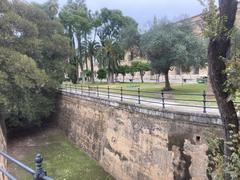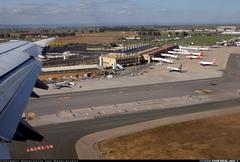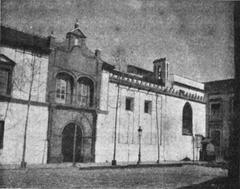
Museo de Artes y Costumbres Populares de Sevilla: Visiting Hours, Tickets, and Historical Significance
Date: 03/07/2025
Introduction
The Museo de Artes y Costumbres Populares de Sevilla is a cornerstone of Andalusian cultural preservation, located in the heart of María Luisa Park and set within the striking Pabellón Mudéjar. Designed by Aníbal González for the 1929 Ibero-American Exposition, this museum provides an immersive experience of southern Spain’s traditional arts, customs, and daily life. Visitors can expect a thoughtfully curated journey through regional history, crafts, festivals, and the lives of Andalusians, all within an architectural masterpiece that beautifully fuses Islamic and Christian artistic influences. Whether you’re planning a cultural itinerary in Seville or simply curious about Andalusian heritage, this guide covers everything you need to know: visiting hours, ticketing, accessibility, highlights of the collections, and nearby attractions (Museos de Andalucía, Guía Sevilla, Seville Traveller).
Table of Contents
- Introduction
- Historical and Architectural Background
- Visiting Information
- Museum Collections and Cultural Significance
- Nearby Attractions and Travel Tips
- Frequently Asked Questions
- Conclusion and Summary
- Official Sources
1. Historical and Architectural Background
The Museo de Artes y Costumbres Populares de Sevilla occupies the Pabellón Mudéjar, an architectural jewel built between 1913 and 1915 as part of Seville’s preparations for the 1929 Ibero-American Exposition. The Mudéjar style—marked by elaborate brickwork, glazed tiles (azulejos), horseshoe arches, and geometric motifs—reflects the centuries-old coexistence of Muslim and Christian cultures in Andalusia. The pavilion is part of the Plaza de América, sharing its setting with the Archaeological Museum and the Royal Pavilion, forming one of Seville’s most picturesque cultural districts.
After serving exposition purposes, the building was repurposed and officially opened as a museum in 1973. Despite challenges such as flooding and restoration needs, the museum has continually expanded its mission to preserve and celebrate Andalusian folklore and material culture (Seville Traveller).
2. Visiting Information
Opening Hours
- September 16 – June 15:
Tuesday to Saturday: 9:00–21:00
Sundays and holidays: 9:00–15:00 - June 16 – September 15:
Tuesday to Sunday and holidays: 9:00–15:00 - Closed on Mondays, except when Monday precedes a public holiday
Note: Hours may vary on public holidays. Always consult the official website for current information (Guía Sevilla).
Ticket Prices
- General Admission: €1.50
- Free Entry: EU citizens (with valid ID) and students (with international student card)
- Reduced Admission: Available for students and seniors
- Free on Sundays after 2:00 PM and select public holidays
Tickets are purchased on-site. Advance booking is only necessary for certain guided tours or special events.
Accessibility
- Wheelchair accessible (ramps and elevators)
- Accessible restrooms
- Tactile exhibits for visually impaired visitors
- Assistance services available upon request
How to Get There
- Address: Plaza de América, Parque de María Luisa, 41013 Sevilla, Spain
- Public Transport:
- Bus: Lines 1, 3, 6, 30, 31, 34, 37
- Metro: San Bernardo and Prado de San Sebastián (Line 1)
- By Foot: Short walk from Plaza de España and city center
Visitor Facilities
- Restrooms and accessible amenities
- Gift shop with books and local crafts
- Audiovisual rooms and interactive displays
- Shaded courtyards and rest areas
3. Museum Collections and Cultural Significance
Traditional Clothing and Textiles
The museum houses one of Europe’s largest collections of Andalusian costumes and textiles:
- Trajes de Flamenca: Iconic ruffled dresses worn during Seville’s Feria de Abril
- Men’s attire: Short jackets, wide-brimmed hats, riding trousers
- Lace and embroidery: Over 6,000 pieces, including mantillas and other textile arts
These exhibits trace the evolution of regional fashion and highlight social customs.
Decorative Arts and Domestic Life
Explore authentic Andalusian interiors and household items:
- Ceramics and Tiles: Masterpieces from Triana and Úbeda, including works from the Cartuja factory
- Furniture: Hand-carved chests, chairs, and cabinets
- Household Utensils: Copper cookware, woven baskets, and more
Agricultural Tools and Rural Heritage
Discover the tools and implements central to Andalusia’s agricultural past:
- Ploughs, olive and wine presses, and measuring devices
- Blacksmith, carpenter, and potter tools
- Photographs and displays illustrating rural life
Festival Traditions and Posters
A vibrant collection of festival memorabilia:
- Feria de Abril Posters: Artistic advertisements dating back to the 20th century
- Costumes and Accessories: Worn during fairs and Semana Santa
- Religious Artifacts: Processional banners, silverwork
Music and Performing Arts
Dedicated exhibits to Andalusia’s musical heritage:
- Flamenco guitars, castanets, and costumes
- Displays on bullfighting and flamenco culture
Temporary Exhibitions and Workshops
Regularly updated exhibitions on crafts, photography, and contemporary interpretations of Andalusian traditions. Educational programs and guided tours for all ages enhance the experience.
4. Nearby Attractions and Travel Tips
Extend your visit with these nearby highlights:
- Archaeological Museum of Seville: Adjacent to the museum, with Roman and medieval artifacts
- Plaza de España: Renowned for its grand architecture and tiled alcoves
- María Luisa Park: Lush gardens perfect for a relaxing stroll
- Royal Pavilion: Another architectural gem of the Plaza de América
Tips:
- Visit early or late to avoid crowds
- Combine your visit with the Archaeological Museum for a comprehensive cultural day
- Check for special events or temporary exhibitions before your visit
5. Frequently Asked Questions
Q: What are the visiting hours?
A: See the “Opening Hours” section above; hours vary seasonally and on public holidays.
Q: How much are tickets?
A: General admission is €1.50; free entry for EU citizens and students with ID.
Q: Is the museum wheelchair accessible?
A: Yes, the museum is fully accessible.
Q: Can I take photos inside?
A: Photography is generally permitted without flash, except in restricted areas.
Q: Are guided tours available?
A: Yes, and booking is recommended for groups or special tours.
6. Conclusion and Summary
The Museo de Artes y Costumbres Populares de Sevilla is an essential destination for anyone interested in Andalusian culture. Its stunning Mudéjar architecture, rich ethnographic collections, and engaging educational programs offer a memorable and enlightening experience for visitors of all ages. With affordable tickets, accessible facilities, and proximity to other cultural landmarks, the museum is ideal for families, history buffs, and art lovers alike. Enhance your visit by consulting official sources or downloading the Audiala app for real-time updates, guided tour schedules, and travel tips.
Engage with the living traditions of Andalusia—plan your visit today and immerse yourself in one of Seville’s cultural treasures!
7. Official Sources and Further Reading
- Museos de Andalucía
- Guía Sevilla
- Seville Traveller
- Nomads Travel Guide – Museo de Artes y Costumbres Populares
- Museumspedia
- The Seville Guide
Images and alt text suggestions:
- “Pabellón Mudéjar exterior at Museo de Artes y Costumbres Populares de Sevilla”
- “Traditional Trajes de Flamenca display at Sevilla museum”



